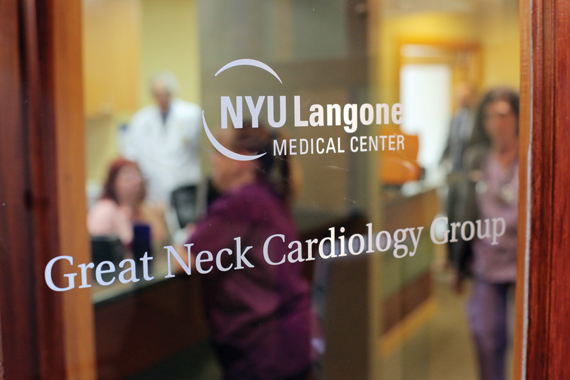Long Island’s vibrant healthcare sector is snapping up office space faster than any other industry in the area, and it’s a trend that is expected to drive demand for Class A office space for the foreseeable future.
Northwell Health, Winthrop University Hospital, Stony Brook University Hospital and Catholic Health Services of Long Island have been adding large blocks to their footprints in recent years, including dozens of new state-of-the-art clinics. The availability rate for office space is now the lowest it has been in 10 years, at 12.4 percent, according to 2016 data.
“Those four in particular have leased or purchased 4 million square feet of space and that represents a full 10 percent of our office market,” said Philip Heilpern, senior vice president at CBRE on Long Island. CBRE figures show that the healthcare sector now occupies 6,712,586 square feet on Long Island.
The top player is Northwell Health, the largest private user of office space in Long Island. The company, also New York’s largest private employer, added a total of 120,000 square feet at two separate locations in Melville, according to Cushman & Wakefield.
Last June, Northwell relocated its executive and administrative staff to a 100,000-square-foot, three-story building in New Hyde Park. In January, it had a ribbon-cutting for a 5,000-square-foot, $1.5 million orthopedic practice in Huntington.
“At any point in time, we’re working on 30 to 40 real estate transactions. That’s all throughout the system, that’s Long Island, that’s the city and Westchester,” said Phil Silverman, senior vice president and chief physical assets officer at Northwell.
Part of the growth can be traced to the Affordable Care Act, which triggered a push to build more medical sites that were cost effective for both patients and health systems, said Bob Timperio, vice president and head of the Healthcare division of EW Howell Construction Group. He said the company has registered a 30 percent jump in healthcare-related projects since 2014, most of it on Long Island.
Hospital executives also pointed to the growing elderly population, plus a desire by patients to avoid large, intimidating hospitals. “A lot of it is because the population, not only here, but across the country, is aging,” said Ted Sasso Jr., president of Sasso Realty and co-chair of the Long Island Business Development Association. “And on Long Island, fortunately the people here have among the highest income levels in the country and are able to afford it.”
Memorial Sloan Kettering said in October it will add 38,000 square feet to its Commack facility for a total of 91,000 square feet. And a plan to build a 105,000-square-foot outpatient treatment center near Nassau Veterans Memorial Coliseum was approved in August.
NYU Langone Medical Center announced an affiliation with Winthrop University Hospital in September. The deal should be finalized in March and is expected to be followed by a capital investment plan that may include new facilities, said Ed Keating, senior vice president of marketing and communications at Winthrop.
For years, Long Island patients have been traveling to the city to see doctors, said Andrew Rubin, vice president for clinical affairs and ambulatory care at NYU Langone. This new affiliation will cut down on that commute.
But the expansion has its limits, and not just for NYU Langone. “One of our challenges is finding high-quality medical office space in Nassau County,” said Rubin, adding that many of the buildings, which were built 20 or 30 years ago, have low ceilings, limited parking and windows that are not airtight.
Stony Brook University Hospital is also busy trying to expand. Two buildings — 240,000 square feet and 225,000 square feet — are going up and will include labs, research facilities and hospital beds. And it’s set to open a 120,000-square-foot ambulatory facility in Commack in March, according to Kenneth Kaushansky, M.D., the School of Medicine’s dean and senior vice president of health sciences. He said they have leases for medical practices in about 30 small buildings in technology parks. Plus, the university is finalizing a deal to take over Southampton Hospital and plans to build a two-story cancer facility in Southampton.
